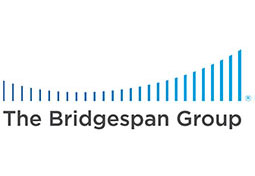Despite a growing agreement among grantmakers and practitioners that solving complex, evolving social problems often requires meaningful and intentional coordination across a field’s actors, few such “field building” efforts are achieving population-level change.
The Bridgespan Group recently spent several months studying the successes and struggles surrounding field building, in hopes of understanding the chasm that often exists between its great potential and its reality. Our research focused exclusively on social change fields and included an extensive literature review, analysis of more than 35 fields, and conversations with over 30 sector leaders (including multiple GEO members) who are doing the work of field building. Although there are two distinct methods to build a field’s capacity—strengthening organizations or strengthening connections and collaboration—our study was mostly concerned with the latter. The current pandemic crisis that we are now in is the most recent reminder of the need for effective coordination and collaboration to address our most challenging problems.
While what field-building activities funders pursue clearly matters (see chart), our research revealed that how funders approach these efforts ultimately determines the field’s ability to work collectively toward transformative change. The “how” starts with sharing power to right the power imbalance between funders and other field actors. And doing so requires a mindset shift by foundation leaders and staff about where “answers” originate—namely not within the foundation. Yet as Don Howard, CEO of the James Irvine foundation, notes, “It’s hard to let go of the idea that if you have the money, you have the best ideas. We know that the best ideas are outside of our building—they’re in the communities.”
Also critical is whether the work is grounded in equity. In our review of field-building efforts and existing literature, we saw very few examples of true population-level change. A common pitfall has been inadequate attention to equity. Even fields considered our biggest “success” stories when it comes to achieving population-level change—teen smoking, teenage pregnancy, hospice and palliative care—still struggle with significant disparities when you disaggregate the results by race. As john a. powell, director of the Haas Institute for a Fair and Inclusive Society, puts forth in his theory of targeted universalism, there is no chance of achieving population-level change without designing solutions that serve the most marginalized. This issue will become even more urgent for field builders in thinking about how to address the repercussions of the Coronavirus pandemic that will surely hit those already marginalized and most vulnerable the hardest.
On this bedrock of distributed power and with consistent focus on equity, we offer a set of guiding principles for funders to help achieve field-building success. We are influenced by principles that guide movement, systems, community-driven, and responsive funders.
- Take a holistic view: A broad and integrated approach to field-building grantmaking can help funders develop a fuller and deeper understanding of the issues they seek to address as well as see those issues in connection to other social problems, fields, systems, and society at large. Funders often silo themselves and stymie their impact by organizing their efforts too narrowly.
- Balance being proactive and being reactive: Historically funders have tended to over-emphasize proactive approaches to field building (i.e., “tilling the soil” to create conditions for change) and under-emphasize reactive approaches (i.e., taking advantage of ripe “moments in time” for making headway). In practice, balancing the two unlocks the greatest potential for impact. Foundations can up their reactive quotient by working indirectly through grassroots regrantors and nonprofits that may be able to quickly identify and address needs and opportunities on the ground.
- Problem solve through inclusive decision-making: A key way funders can enable sticky change is by empowering fellow travelers within the field and those closest to the problem to lead and co-create alongside them. Tanya Coke, Ford’s Foundation’s director of Gender, Racial and Ethnic Justice Program, explains this importance: “It is critical to think about who you need around the table to make the issue move. We as funders can use grants to bring stakeholders into the field who might not otherwise come in.”
- Commit to the long-term: To see results from field-building efforts, funders need to commit funding for an extended period of time given the complexity and often systemic nature of the problems. The changes in the field of hospice and palliative care took [20 years ] (https://www.rwjf.org/en/library/research/2011/03/improving-care-at-the-end-of-life.html). The fight for marriage equality took over four decades—with the broader LGBTQ rights field continuing to face systemic barriers and threats to progress. Living into this principle can shape how funders approach grant cycles.
Lastly, we must also mention that the first step in investing effectively in field building is investing at all. Bridgespan’s recent study of funder collaboratives found that although field-building efforts are one of the most valuable investments funders can make, historically such efforts are the least funded. And our research of philanthropic big bets found that only 7 percent of gifts over $10 million by US donors went to field building efforts. Simply put, significantly more money must flow to field building efforts if they are ever to achieve anything close to their potential.
Read the full report on Bridgespan’s website here.


